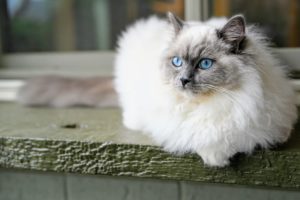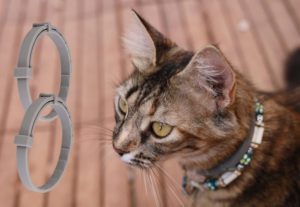Shedding is a normal part of a cat’s grooming process. It helps them remove old or damaged hair and keep their coat healthy. However, too much shedding can be a hassle for cat owners. In this article, we will explain why cats shed, how to manage shedding effectively, and how to spot signs of health problems related to shedding.
Why Do Cats Shed?
Normal Shedding Cycles
Cats have different shedding cycles depending on factors such as breed, age, and fur length. Most cats shed more during seasonal changes, usually in the spring and fall. This is when they switch from a heavier winter coat to a lighter summer coat or the other way around. However, some cats may have different shedding patterns, and individual variations are normal.
Factors That Affect Cat Shedding
Several factors can influence how much and how often cats shed. These include:
- Breed: Some cat breeds, like Persians or Maine Coons, have longer and thicker fur, which means more shedding.
- Hormonal changes: Hormonal changes, such as those that happen during pregnancy or after spaying or neutering, can affect how cats shed.
- Environmental factors: Changes in temperature and daylight hours can trigger shedding. Indoor cats may shed more evenly throughout the year because of the stable indoor environment.
- Overall health: Cats with health problems or nutritional deficiencies may shed more than usual. If you notice excessive or sudden changes in your cat’s shedding, you should see a veterinarian.
According to Dr. Joanna Woodnutt MRCVS from Veterinarians, cat shedding is caused by the hair cycle that involves hair renewal. Each hair has four phases: anagen (growth), catagen (transition), telogen (rest), and exogen (shedding). The length and timing of these phases depend on factors such as genetics, hormones, and environment. Shedding is a normal part of the exogen phase when the old hair falls out and is replaced by a new one.
Shedding helps cats adapt to the changing seasons and keep their coat healthy. However, if your cat is shedding too much or too often, it may indicate an underlying problem that needs attention. Some common causes of abnormal shedding include allergies, parasites, infections, hormonal imbalances, stress, or autoimmune disorders. If you suspect your cat has any of these conditions, consult your veterinarian as soon as possible.
How to Manage Cat Shedding
To manage cat shedding effectively, you need to groom your cat regularly and feed them a proper diet.
Regular Grooming Tips
Regular grooming sessions help remove loose hair, prevent mats, and keep your cat’s coat healthy. Here are some tips for effective grooming:
- Brushing Techniques for Long-Hair Cats: Long-haired cats need more frequent brushing to prevent tangles and mats. Use a wide-toothed comb or a slicker brush to gently remove loose hair and prevent mats from forming. Break up the grooming session into shorter periods to avoid stressing your cat.
- Essential Tools for Cat Grooming: Use high-quality cat deshedding tools, such as deshedding brushes or gloves. These tools are specially designed to remove loose hair from your cat’s coat without causing discomfort. Look for brushes with fine bristles that can reach through the topcoat and remove the loose undercoat.
| Material | Texture | Length |
|---|---|---|
| Rubber | Firm and durable | Short to medium |
| Silicone | Soft and gentle | Short to long |
| Fabric with rubber or silicone tips | Flexible and comfortable | Short to medium |
| Fabric with rubber or silicone tips | Precise and controlled | Short to long |
To discover important techniques for grooming your cat, check out our article titled: Essential Cat Grooming Techniques for a Healthy and Contented Feline. |
Dietary Tips for Reducing Shedding
A cat’s diet affects the health of their skin and coat. Here are some dietary tips to help reduce shedding:
- Importance of Protein in a Cat’s Diet: Cats are obligate carnivores and need a diet rich in high-quality animal protein. Make sure your cat’s food contains enough protein from sources like meat or fish. Protein supports healthy skin and coat condition, reducing excessive shedding.
- Essential Fatty Acids for a Healthy Coat: Omega-3 and Omega-6 fatty acids are essential for maintaining a healthy coat. These fatty acids can be found in fish oil or through specific cat food formulations. Ask your veterinarian for dietary advice tailored to your cat’s needs.
When Shedding Indicates Health Problems
While shedding is natural, excessive or sudden changes in shedding patterns can indicate health problems. Here’s what to look out for:
- Recognizing Abnormal Shedding: Excessive shedding that results in bald patches, irritated skin, or a dull, unkempt coat may indicate health problems. Other signs to watch for include redness, swelling, or itchiness.
- Seeking Veterinary Care: If you notice significant changes in your cat’s shedding or suspect an underlying health issue, it’s important to consult a veterinarian as soon as possible.
Cat shedding is a natural process that helps cats maintain a healthy coat. However, excessive shedding can be a sign of health problems or nutritional deficiencies. Therefore, it’s important to groom your cat regularly and feed them a proper diet.
Dr. Mark Smith, DVM and cat lover
Frequently Asked Questions
Cats shed their fur twice a year, usually in spring and autumn . They also shed their fur constantly on a smaller scale as part of their natural coat renewal.
There are various grooming tools available for cat shedding, such as brushes, combs, gloves, and de-shedding tools. The best tool for your cat may depend on their hair length, coat type, and preference. You can consult your vet or a professional groomer for advice on the best tool for your cat.
You can reduce shedding through diet by feeding your cat a high-quality food that meets their nutritional needs. You can also supplement their diet with omega-3 and omega-6 fatty acids, which can help improve their skin and coat condition. Some foods that are rich in these fatty acids include fish oil, flaxseed oil, and coconut oil. However, you should always consult your vet before adding any supplements to your cat’s diet, as they may have adverse effects or interactions with other medications.
With a passion for cats and years of experience in cat care and grooming, I have gained valuable insights and expertise that I want to share with other cat lovers. I believe that every cat deserves the best care possible, and through this platform, I aim to empower cat owners like you to provide the utmost love and care for your feline companions.



